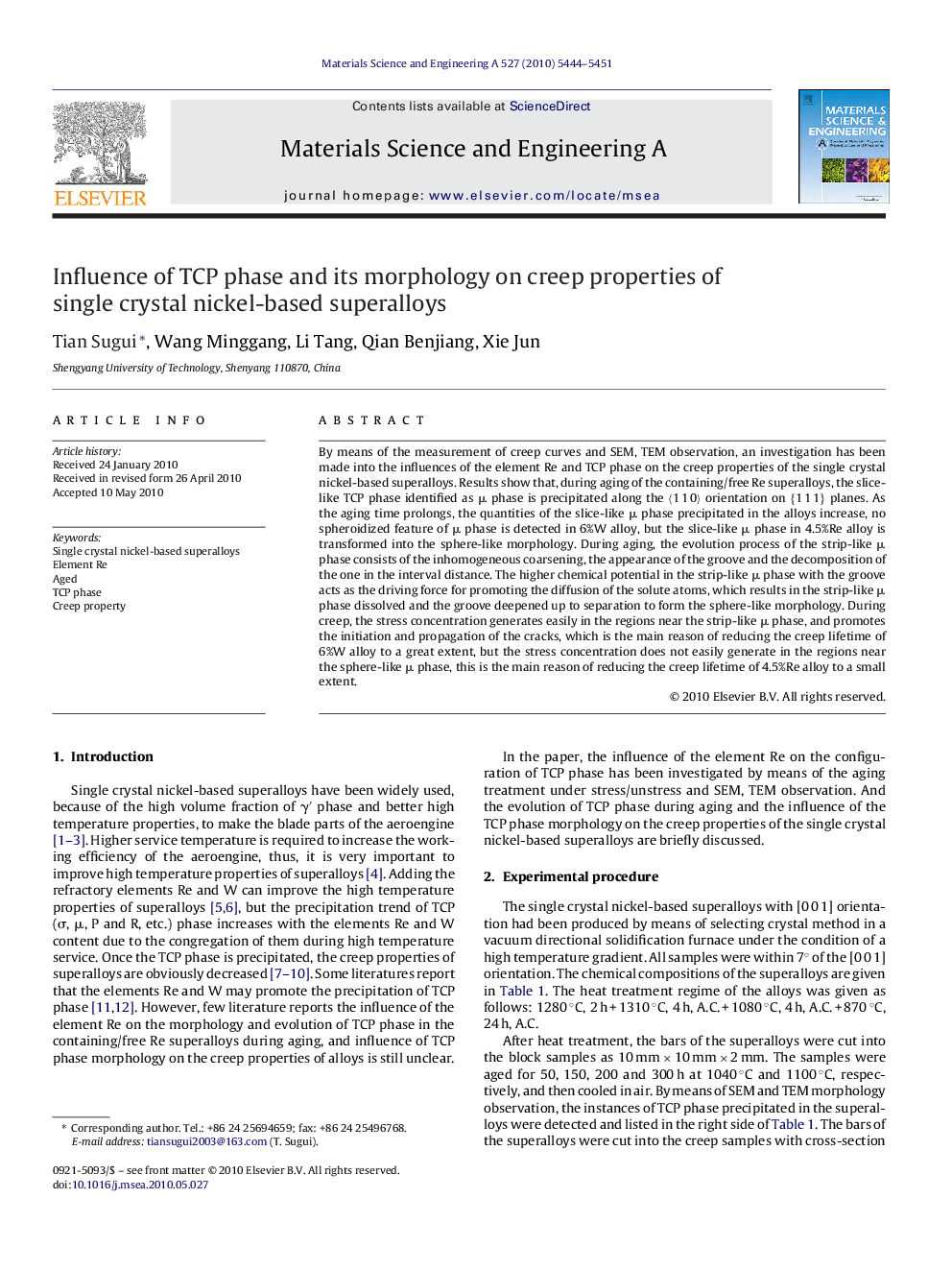| Article ID | Journal | Published Year | Pages | File Type |
|---|---|---|---|---|
| 1579295 | Materials Science and Engineering: A | 2010 | 8 Pages |
By means of the measurement of creep curves and SEM, TEM observation, an investigation has been made into the influences of the element Re and TCP phase on the creep properties of the single crystal nickel-based superalloys. Results show that, during aging of the containing/free Re superalloys, the slice-like TCP phase identified as μ phase is precipitated along the 〈1 1 0〉 orientation on {1 1 1} planes. As the aging time prolongs, the quantities of the slice-like μ phase precipitated in the alloys increase, no spheroidized feature of μ phase is detected in 6%W alloy, but the slice-like μ phase in 4.5%Re alloy is transformed into the sphere-like morphology. During aging, the evolution process of the strip-like μ phase consists of the inhomogeneous coarsening, the appearance of the groove and the decomposition of the one in the interval distance. The higher chemical potential in the strip-like μ phase with the groove acts as the driving force for promoting the diffusion of the solute atoms, which results in the strip-like μ phase dissolved and the groove deepened up to separation to form the sphere-like morphology. During creep, the stress concentration generates easily in the regions near the strip-like μ phase, and promotes the initiation and propagation of the cracks, which is the main reason of reducing the creep lifetime of 6%W alloy to a great extent, but the stress concentration does not easily generate in the regions near the sphere-like μ phase, this is the main reason of reducing the creep lifetime of 4.5%Re alloy to a small extent.
